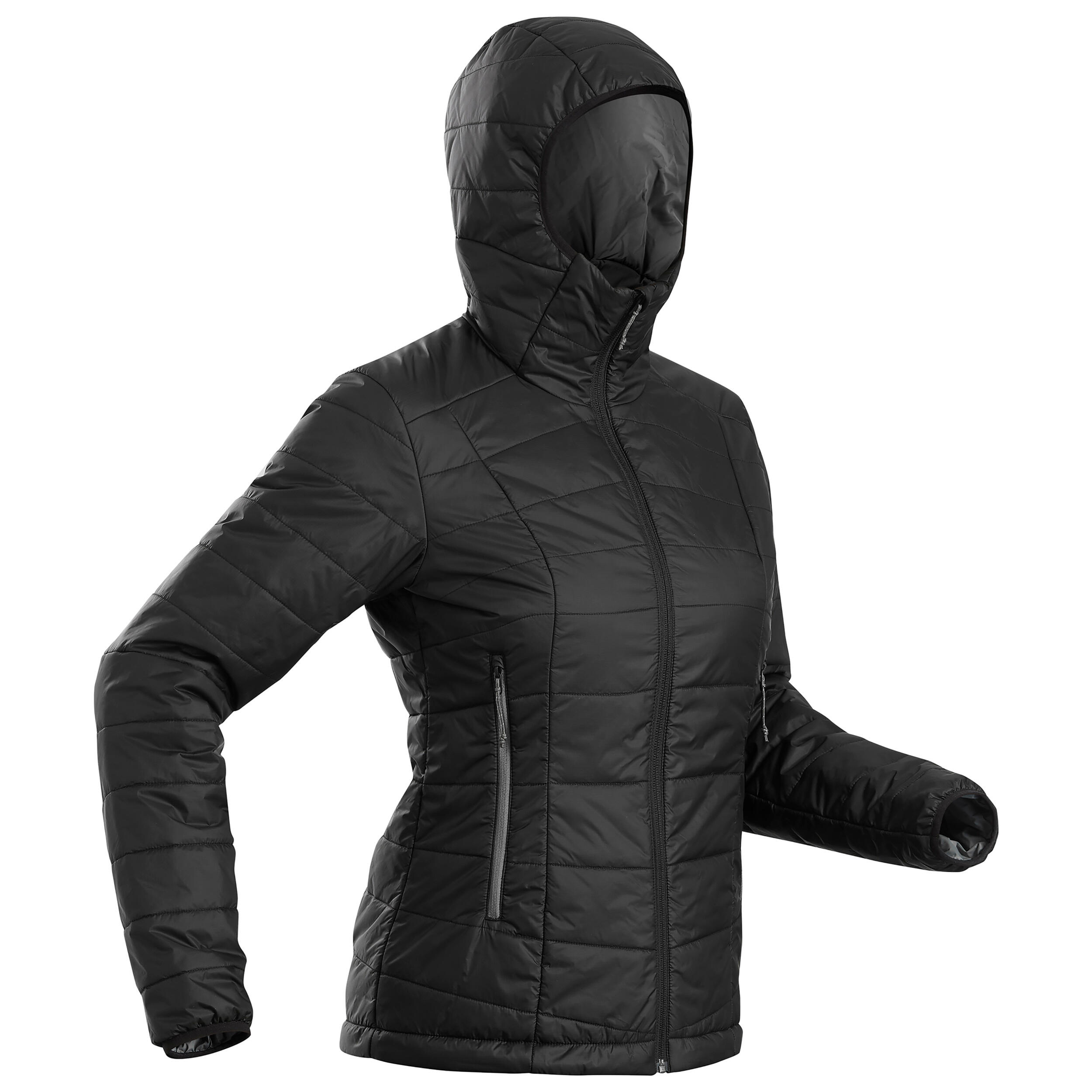



forclaz
Women’s Padded Winter Jacket – MT 100 Black
$60.00
This padded, hooded jacket offers warmth, low weight, and durability, so you can hike comfortably in cool weather (as low as -5°C when active). Its technical features make this padded jacket compact, slim-fitting and weight saving on the trails.
4.5/5
(605 )
5
425
4
124
3
28
2
11
1
17
90%
Sat, Dec 16, 2023
Great jacket for car, shopping, quick throw on.
Lesli
-
: 8 to 12 months
: [object Object]
Warm enough for short outdoor walk or shopping or gdriving in the car during the winter. Pocket zipper gets stuck a lot but otherwise great medium layer for winter.
| Water repellent | 3 | |
| Warmth | 4 | |
| Compact design | 5 |
Thu, Apr 11, 2024
Priyanka
-
: 3 to 8 weeks
: [object Object]
Don't purchase.worst quality.
| Warmth | 1 | |
| Water repellent | 1 | |
| Value for money | 1 | |
| Compact design | 1 |
Wed, Apr 03, 2024
Monissha
-
: 4 to 6 months
: [object Object]
Good winter stuff at reasonable prices
Tue, Apr 02, 2024
Drsurendra
-
: 3 to 8 weeks
: [object Object]
Went for seralysar lake and Raghupur fort track from Jalori pass in Jibhi at minus five degree and it was really helpfull
| Warmth | 5 | |
| Water repellent | 5 | |
| Value for money | 5 | |
| Compact design | 5 |
Thu, Mar 28, 2024
Rajneesh
-
: 4 to 6 months
: [object Object]
Good product
| Warmth | 5 | |
| Water repellent | 5 | |
| Value for money | 5 | |
| Compact design | 5 |
Wed, Mar 27, 2024
Aarushi
-
: 3 to 8 weeks
: [object Object]
Awesome
| Warmth | 5 | |
| Water repellent | 5 | |
| Value for money | 5 | |
| Compact design | 5 |
Wed, Mar 27, 2024
Krishna Mohan Reddy
-
: More than 1 year
: [object Object]
Excellent
| Warmth | 5 | |
| Water repellent | 5 | |
| Value for money | 5 | |
| Compact design | 5 |
Mon, Mar 25, 2024
krutika
-
: [object Object]
Very nice product.
| Warmth | 5 | |
| Water repellent | 5 | |
| Value for money | 5 | |
| Compact design | 5 |
Fri, Mar 22, 2024
Seema
-
: 3 to 8 weeks
: [object Object]
Amazing product
| Warmth | 5 | |
| Water repellent | 5 | |
| Value for money | 5 | |
| Compact design | 5 |
Fri, Mar 22, 2024
VIVEK
-
: 3 to 8 weeks
: [object Object]
Thanks for good products
| Warmth | 5 | |
| Water repellent | 5 | |
| Value for money | 5 | |
| Compact design | 5 |